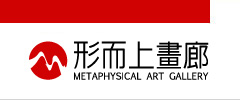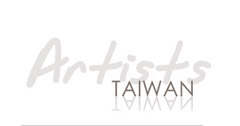1941
|
Born in Ci-Gan
Town, Tainan County. |
| 1966 |
Graduated
from National Taiwan Junior College of Art. |
| 1967 |
Started the
teaching career in Keelung City Zhong-Shan
Junior High School. |
| 1969 |
Studies with
Master Zhao-Shen Chiang. |
| 1977 |
Entered Photographic
Society of Keelung.
Invited to teach in Keelung City Da-De Junior
High School.
Won the "Excellent Photographer Prize"
of Photographic Society of Keelung in the
field of Filmstrip.
Became a member of Keelung Foundation of Art,
and serve the post of business assistant.
Resigned from Keelung City Da-De Junior High
School. |
| 1979 |
First personal
exhibition in Taipei Chuen Zhi Gallery.
Became a member of Chinese Art Association. |
| 1980 |
Won the first
prize of Zhong Shan Literary and artist creation. |
| 1982 |
Personal
Painting Exhibition in Taipei Apollo Art Gallery.
Journeyed to Swaziland, Austria, Germany,
France, Italy. |
| 1983 |
Won the first
Prize of San-Lian Wu Literary and artist creation.
Painting Exhibition in Taichong Ming Men Art
Gallery. |
| 1984 |
Painting
Exhibition in Taipei Apollo Art Gallery.
Invited to teach in National College of Arts
(Now it is called Taipei National University
of the Arts). |
| 1985 |
April, journey
through Southern Cross-Island Highway, Taiwan.
July, journey Penghu, Siyu, Tong-Pan Island,
Wang-An Island. |
| 1986 |
January,
Traveled India and Nepal. |
| 1987 |
Journeyed
to Kingdom of Bhutan, Sikkim, and Nepal.
Gave the photography exhibition "The
Ancient Mysterious Bhutan" after the
journey in southern Asia.
Invited by Taiwan National Museum of History
to visit and exhibit in Western USA. |
| 1988 |
Exhibition
"The Song of Big Tree" both at National
Museum of History and Taipei Caves Art Centers. |
| 1989 |
Journeyed
to South Africa. |
| 1990 |
Journeyed
to Guilin, Kunming, Shilin, Huangshan, Jiangsu
and Hangzhou. |
| 1991 |
Second journey
to Huangshan, and traveled Lake Tai, Yianshou,
Jiansu and
Hangzhou. |
| 1993 |
Accompanied
his teacher Zhao-Shen Chiang for "Zhao-Shen
Chiang Calligraphy and Painting Exhibition"
in National Art Museum of China, and journeyed
Huangshan, Houxie. |
| 1994 |
Accompanied
Zhao-Shen Chiang traveling Bai-Yun River,
Huangshan. |
| 1995 |
Accompanied
Zhao-Shen Chiang to hold "Zhao-Shen Chiang
Calligraphy and Painting Exhibition"
in Liaoning Province Museum.
Invited to give a Personal Painting Exhibition,
sponsored by Cultural Affairs Bureau of Tainan
County Government. |
| 1996 |
Painting
Exhibition in Nan Kuen Ni- Kuen Ying Art Center. |
| 1998 |
Guest Artist
in Chinese University of Hong Kong, New Asia
College Art Department. |
| 1999 |
Personal
Exhibition at Taipei Lung-Men Art Gallery. |
| 2000 |
Invited in
¡uStride Across the Century-Taiwan Ink Painting¡vto
exhibit in Macedonia and Czech, sponsored
by Taiwan Government Information Office.
Invited in the Exhibition "One Hundred
Years of Taiwanese Arts", sponsored by
National Taiwan Museum of Fine Arts. |
| 2001 |
Invited in
the group exhibition "Artists of Long
River" in Beijing National Art Museum
of China, sponsored by Taiwan Straits Exchange
Foundation.
Invited in the Exhibition "One Hundred
Years of Chinese Arts", sponsored by
Beijing National Art Museum of China.
"Special Exhibition of Yi-Hong Lee's
Hand-Scrolls and Album" in Taichong Providence
University Art Center. |
| 2002 |
Hand scroll
"Fishing Farm in Guandu" finished. |
| 2003 |
Photographic
program: Ventifacts in Shihmen Township Linshan,
hand scroll "Ventifacts waiting for the
tide" finished.
October, group exhibition "Lure of Nude"
in Taipei Mayor's Residence Art Salon. |
| 2004 |
Hand scrolls
"Painting of plum blossoms" and
"Bloom on the Branch in Winter"
finished.
Exhibition of Nan-Ying Folklore Artists Series-Yi-Hong
Lee's Painting and Calligraphy. Collection
of his works published.
"yellow Box"group exhibition in
Taipei Fan Arts Museum. |







